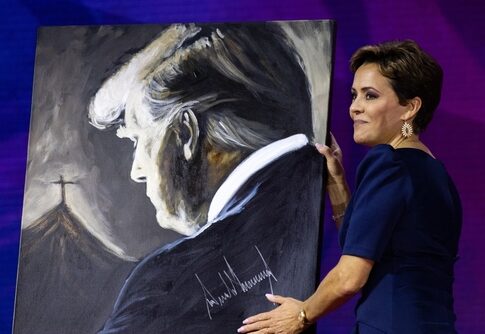A controversial portrait of President Donald Trump is being removed following public criticism of the artwork. The artist defended her work by suggesting that official portraits are meant to be subjectively interpreted by viewers, yet this explanation did little to quell the growing sentiment among Trump supporters. What criteria should determine the appropriateness of official portraits in government buildings?
Trump’s Complaints Prompt Portrait Removal
President Donald Trump publicly criticized his official portrait hanging in the Colorado State Capitol, calling it “purposefully distorted to a level that even I, perhaps, have never seen before.” The oil painting, created by artist Sarah Boardman during Trump’s presidency, will now be removed at the request of Republican leaders after Trump’s complaints gained traction.
Trump compared the artwork unfavorably to Boardman’s portrait of former President Obama, stating, “The artist also did President Obama, and he looks wonderful, but the one of me is truly the worst.” The president suggested the artist “must have lost her talent as she got older,” a remark that added to the controversy surrounding the artwork’s aesthetic qualities.
I agree with President Trump.. Someone throw this garbage portrait in the trash.. It doesn't even look like him. pic.twitter.com/SzSOkEjHGc
— aka (@akafaceUS) March 24, 2025
Funding and Public Reception
The portrait unveiled in 2019, was funded by over $10,000 raised through a GoFundMe campaign organized by Colorado Republicans. This grassroots funding effort makes the subsequent rejection particularly notable, as the portrait was commissioned by supporters rather than political opponents.
Trump claimed his objections reflected broader public sentiment, stating “Many people from Colorado have called and written to complain.” He further emphasized the intensity of the reaction, adding, “In fact, they are actually angry about it!” suggesting the portrait had become a rallying point for his supporters in the state.
Donald Trump is not happy about this portrait and to be fair, it looks nothing like him. pic.twitter.com/3xHem19Alb
— Alexandra Marshall (@ellymelly) March 24, 2025
Artistic Interpretation vs. Political Representation
Artist Sarah Boardman defended her work by stating that official portraits are meant to be accepted or rejected by viewers based on their interpretations. This perspective highlights the inherent tension between artistic freedom and the expectations surrounding the official portraiture of political figures.
Trump directed his complaint to Colorado Governor Jared Polis, effectively bringing state leadership into the artistic dispute. The governor’s office has not provided detailed comments on the decision to remove the portrait, leaving questions about whether artistic or political considerations ultimately drove the decision.


